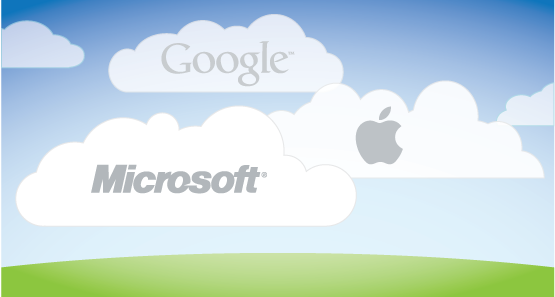
Last October, The Economist trumpeted “The Clash of the Clouds” or the beginning of an epic battle between Microsoft, Google, and Apple. For the last two years, we have witnessed a bipartisanship in this war, which simplified to everybody against Microsoft. Google’s announcement last November of Chrome OS (see a previous post in this blog) could be interpreted as another step in this war against Microsoft’s Windows 7. So far, it looked like all the efforts, both by Google and Apple, were aimed to turn Microsoft software into a relic of the past. Not anymore. It was very clear when Steve Jobs said, “Netbooks aren’t better at anything” while introducing the new iPad as the anti-netbook device two weeks ago in San Francisco. Apple and Google are now frenemies. Both share the view of convincing consumers to feel comfortable with their applications and leaving Microsoft, but they have very different strategies to achieve it. On one hand, Google wants the consumers to move towards doing everything on their apps (Gmail, Google Docs, Maps, Calendar, Voice etc) in the cloud, using cheap netbooks, running Chrome OS. On the other hand, Apple prefers the consumers to use iPhone OS-based apps instead in its new appealing iPad through its wall-garden AppStore.
While this simplification is taking place on the surface of the earth with the netbooks and iPads, a new complex industry has been created in the clouds mimicking the traditional three-layer architecture of computers (hardware, middleware, applications). First, we find companies like Amazon (EC2 Elastic Compute Cloud), IBM, HP, and the main Telco operators offering storage, computing and bandwidth on demand, what is called IaaS (Infrastructure as a Service). Second, a few companies like Microsoft (Azure) or Google (App Engine) are providing programming platforms to develop applications in the cloud, what is called PaaS (Platform as a Service). Last, we find a growing number of companies providing web applications from the cloud, without the need of installing a software license on your computer, or SaaS (Software as a Service), among the most popular are SalesForce, Google Apps, MSN Office Web or NetSuite. However, there some storms to overcome before cloud computing would be widely adopted not only in the consumer market but also in the corporate world. CIOs are worried about security, privacy of data, compliance, latency, and the lack of standards. Vint Cerf, one of the fathers of Internet, raised recently his concerns, specifically regarding data portability among cloud computing providers.
For the last six months, I have asked all CIOs I meet their position about cloud computing. The majority of CIOs see the potential of cloud computing, but most of the time they say is not the appropriate technology for their own industry, like in the Gershwin song “But not for me”. To make a forecast about cloud computing can be more complicated than a weather forecast. However, if history can serve as a guideline, one hundred years ago one the most strategic roles in corporations was the Chief of Electricity Officer. Some analysts say that cloud computing will turn IT into another utility. Who knows when and where? Meanwhile, let us keep an eye on the next battle in the clouds.



Apple and Google will be winers of this war